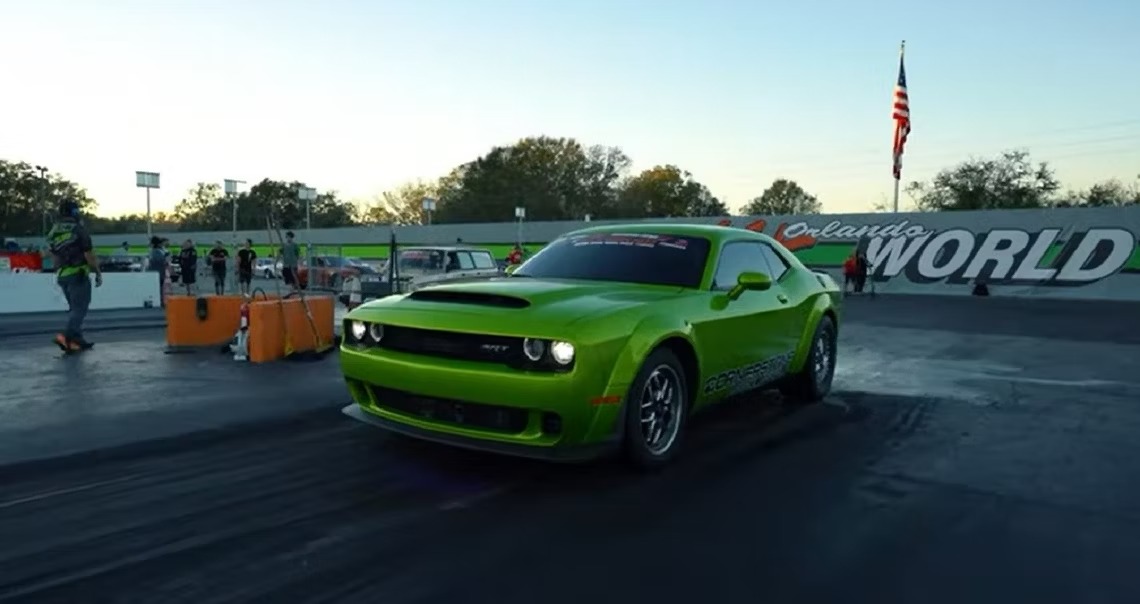The twin-turbocharged Dodge Demon proves a handful on the drag strip and snaps its driveshaft, resulting in a quick-turnaround repair at the track.

Those familiar with MotorTube’s video content on YouTube will be aware of the trials and tribulations of getting the twin-turbocharged Dodge Demon to Sick Week to try its luck on the quarter-mile pass.
Previously, the car underwent its transformation just days before the team were due to get the car to Orlando. After getting its supercharger removed and the two turbos installed, the Demon was making 1132 hp on the dyno.
The neon-green muscle car is no shrinking violet in the flesh and thanks to its beefy upgrade it should be fast on the strip, yet due to an unexpected failure it had to retire after one pass with a broken driveshaft. Here’s what the team had to do with the clock ticking and disqualification looming.
The Dodge Demon Twin Turbo Kit Proves Its Worth In An Unexpected Way
MotorTube’s twin-turbo Dodge Demon obviously outgrew its driveshaft pretty quickly, highlighting the importance of swapping out all the parts for sturdy ones when carrying out engine upgrades.
It’s not clear why it failed, but the host of the video arrives to find the Dodge Challenger up on a jack having the broken shaft removed and the car will have to sit overnight at Orlando Speed World while they figure out a plan. Facebook comes up trumps with a driveshaft for sale two hours away – so the team head on over to the seller; but it turns out it’s for a Dodge Charger.
In the end, another company provides a solution in the form of a driveshaft delivered to the car at the track, which gets fitted thanks to a portable lifter run by an independent company.
A twin-turbo Dodge Demon should be fast – the stock Demon can reach 60 mph in around 2 seconds. That is also with only 840 hp under the hood, but this Demon has almost 300 hp more on offer than the standard car; so the pass should be a quick one.
How Fast Is A Twin-Turbo Dodge Demon: Not Fast Enough
What transpires is a reasonably-quick run – a 10:60 time at 141 mph, but the car isn’t optimized and the team must make adjustments to the Demon drag racer before it runs a second time.
Unfortunately, the car runs even slower this time at 11:90 at 111 mph: a slow time, and clearly the Demon needs some investigative work done to get it running at its full potential.

Some people will tell you that part of the fun is in tweaking your project through testing, and that the journey is the destination, though the team get disappointed by the day’s performance. Dodge Challenger reliability isn’t the problem here, as Challengers are reliable and the sturdy 6.2-liter engines can put up with a lot of power and punishment – before you modify it, of course and then there are many new variables at play.
Perhaps it’s the short timeframe they had in the garage before heading down to Sick Week, and now they must work quickly with their spanners and MacBook in order to fettle the Demon into better shape for tomorrow’s races.









